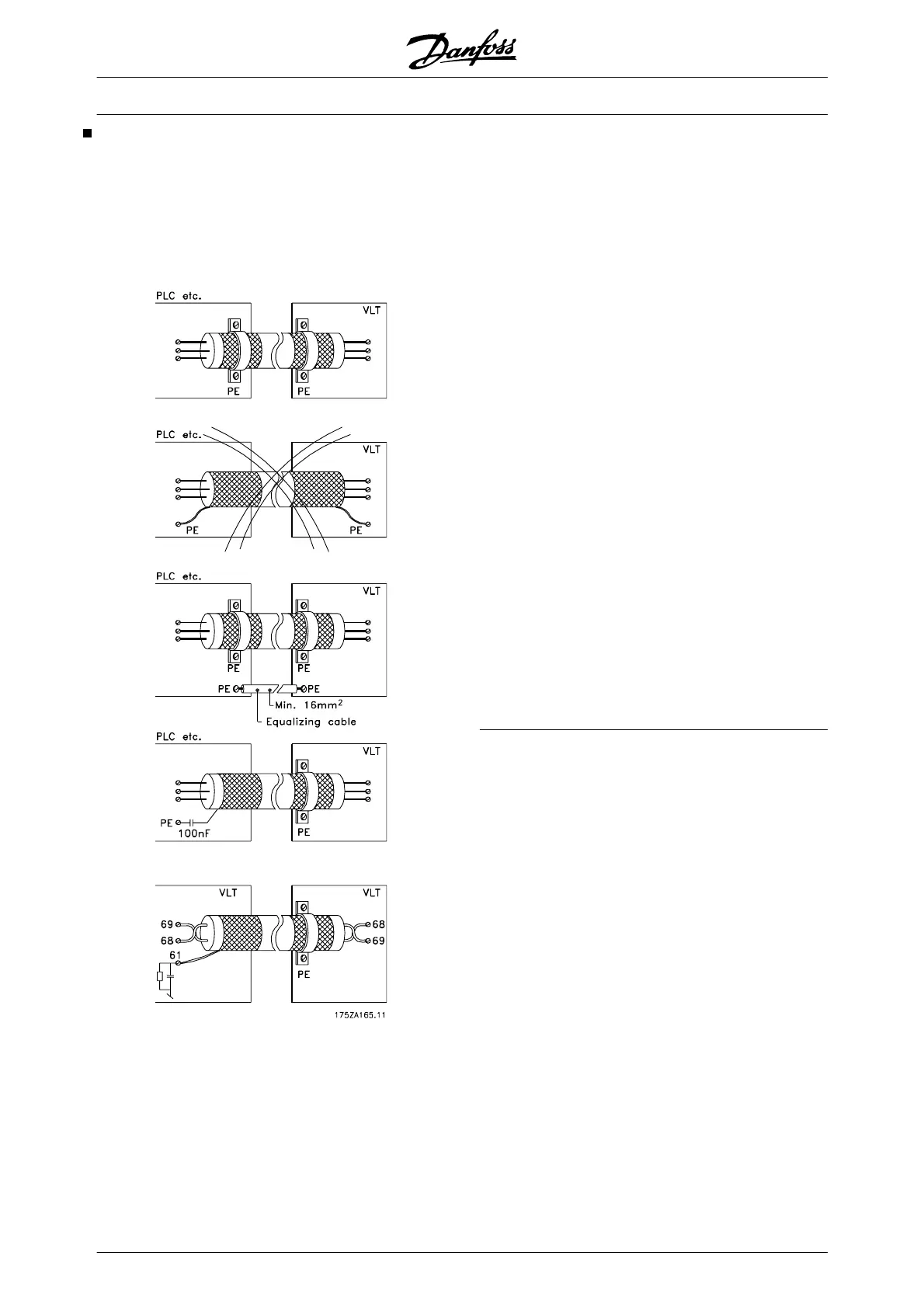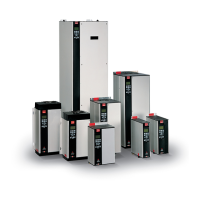Electrical installation - earthing of control cables
Generally speaking, control cables must be braided
screened/armoured and the screen must be connec-
ted by means of a cable clampat both ends to the metal
cabinet of the unit.
The drawing below indicates how correct earthing is
carried out and what to be done if in doubt.
Correct earthing
Control cables and cables for serial communication
must be fitted with cable clamps at both ends to ensure
the best possible electrical contact
Wrong earthing
Do not use twisted cable ends (pigtails), since these
increase the screen impedance at high frequencies.
Protection with respect to earth potential between
PLC and VLT
If the earth potential between the frequency converter
and the PLC (etc.) is different, electric noise may occur
that will disturb the whole system. This problem can be
solved by fitting an equalising cable, to be placed next
to the control cable. Minimum cable cross-section: 16
mm
2
.
For 50/60 Hz earth loops
If very long control cables are used, 50/60 Hz earth
loops may occur. This problem can be solved by con-
necting one end of the screen to earth via a 100nF
capacitor (keeping leads short).
Cables for serial communication
Low-frequency noise currents between two frequency
converters can be eliminated by connecting one end
of the screen to terminal 61. This terminal is connected
to earth via an internal RC link. It is recommended to
use twisted-pair cables to reduce the differential mode
interference between the conductors.
VLT
®
5000 Design Guide
80 MG.52.B2.02 - VLT
®
is a registered Danfoss trademark
